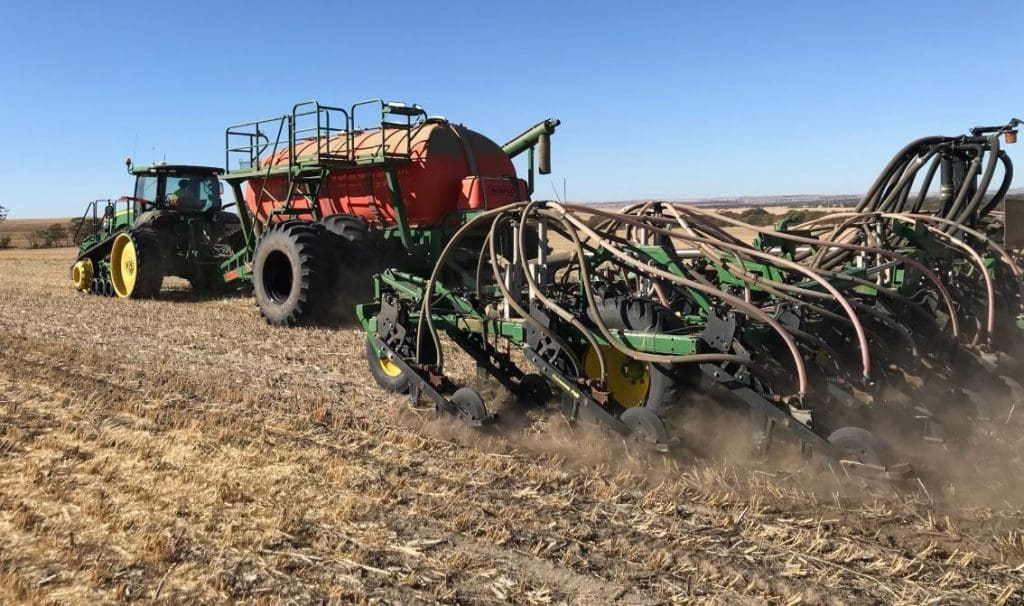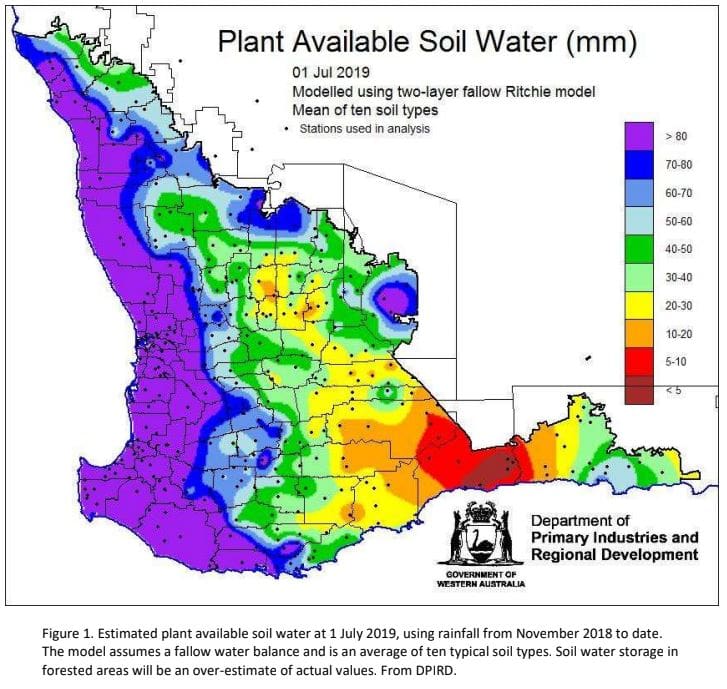THE majority of the Western Australian grainbelt is now in good shape and most areas could achieve average grain yields if follow up rains come on the back of recent falls, according to the latest crop report from the Grain Industry Association of WA (GIWA).
More than 8.0 million hectares (Mha) of winter crop have gone in this season in WA, including 4.58Mha of wheat and 1.95Mha of barley. The estimated canola area has dropped below 1Mha.
GIWA Oilseeds Council chair and crop report author, Michael Lamond said the rain that came at the end of the first week in June was essentially the break of the season.
“Whilst we had had bits and pieces prior to that for most areas, except for the south coast and parts of the Esperance area, all it did was shoot the cereals which then just sat there,” he said.
“Once we got the break in June – it was an old-fashioned break that rained gently for three days – the emergence was really good, except where there was prior seed germination that had died.
“Essentially there was very good germination and good weed control.”
Mr Lamond said cold conditions at the end of May/early June meant the crops took a long time to get out of the ground and were much later than last year.
“But at the end of June we had a warm spot and the crops made up a bit of ground. Then there was really good general rain last week right across the grainbelt, apart from the area that had been light on all along radiating out from Ravensthorpe. They had less than 20 millimetres, and Esperance virtually got nothing,” he said.
“There has been above average June rainfall for most of the grainbelt. There is a full profile now everywhere except for Ravensthorpe and Esperance.”
Mr Lamond said the northern half of the state’s cropping zone would need a soft finish to hit average grain yields as the crops were very late for this time of the year, while the central regions should easily achieve average crops.
He said the significant factor in the Great Southern this year was that there had been no waterlogging to threaten yield potential.
“The Great Southern and West Albany should really go above average because they haven’t got the waterlogging. The South Coast is above average, but Esperance is only average,” he said.
“The southern areas have generally less subsoil moisture and are behind their ideal growth stage, although the chances of a soft finish are greater moving closer to the southern regions, and most growers are looking forward to at least average grain yields.
Canola area down
Mr Lamond said canola plantings had been reduced significantly this year, and the crop had virtually been dropped out altogether in the low rainfall areas.
“Canola is really late. It will definitely have well below yield potential in most of the state. A lot of the canola is still at only two or three leaf stage. Often it is flowering by the third week in July,” he said.
“We had a slight increase in barley area, but that was always going to be the case.”
Mr Lamond said a lot of growers had stopped dry sowing earlier than usual with 70 or 80 per cent of their crop area completed, but the recent the rain was so good it prompted the sowing of additional hectares.
“Paddocks that were held back due to little or no rain up until the end of May due to the uncertainty of the season and weed control risk, mostly ended up being planted,” he said.
The majority of the later sown paddocks have gone to wheat and whilst some of the heavier country was left out to pasture, most growers opted to go ahead with their planned seeding programs.
Seasonal outlook
WA Department of Primary Industries and Regional Development’s Ian Foster said rain for June was well above average for much of the northern and eastern agricultural area, near average for much of the South West, and still below average for parts of the South Coast.
He said seasonal rain since April remained well below average across the wider region.
Soil moisture in the root zone remains below average across the South Coast, though is now above average for the northern agricultural area.
The seasonal rainfall outlooks from Australian and international models indicate July to September rainfall is more likely to be below normal for much southern Western Australia.
A positive Indian Ocean Dipole event is expected to continue from June onwards. Combined with predictions of higher than normal atmospheric pressure over Australia, is associated with below normal rainfall over much of Australia.





HAVE YOUR SAY